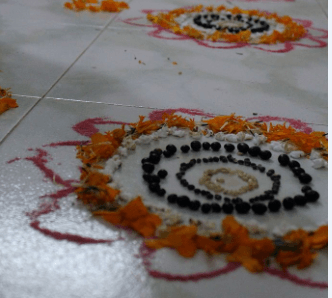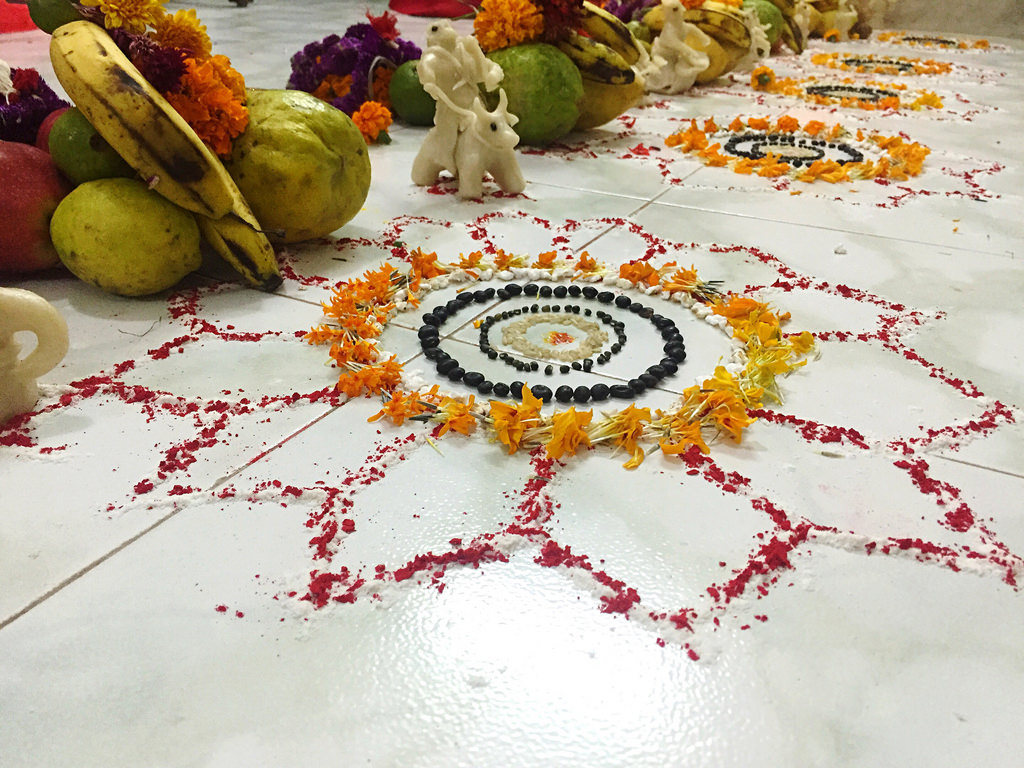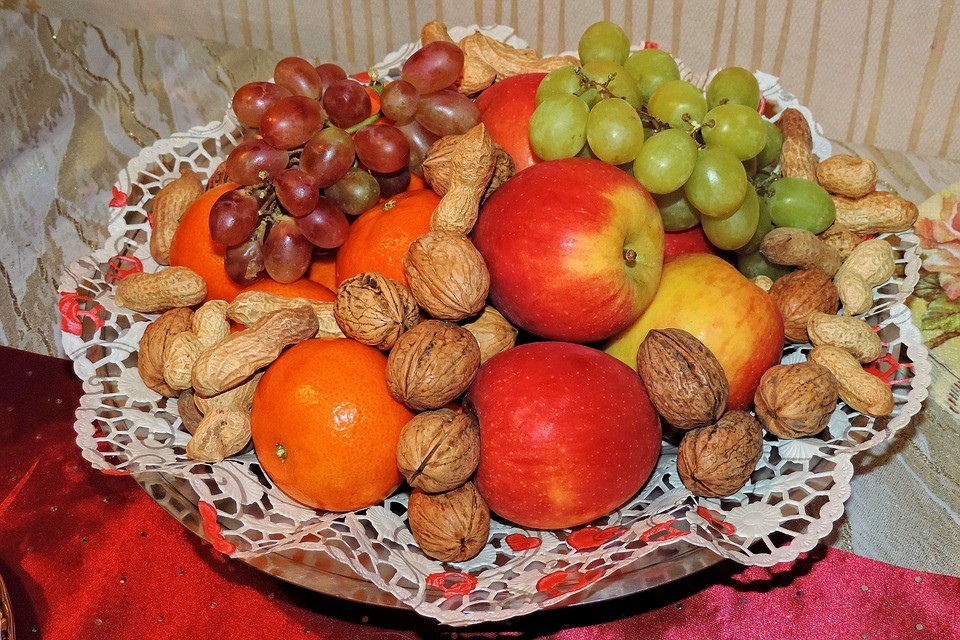When it comes to Nepal, there comes the unique culture, tradition,and diversity. Festivals are the immense part of Nepalese life. Whatever regions an individual belongs to, the festivals and the celebrations are observed in rejoice.
Usually, we worship a lot of gods and goddess in Nepal. But the celebrations in Nepal are not always devoted to specific gods or goddesses. According to Hindu mythology, god exists in every living creature and everything around us. There is a tradition in Nepal that celebrates the god within us.
While the entire Hindus in the country are busy celebrating the greatest festivals of the country; Dashain and Tihar, they are the Newars only who perform Mha Puja (Worshiping self). It is the worshiping of the god inside us. What could be a better way than worshiping self to worship the god within us? It is the celebration of the existence of owns life and understanding the importance of the life. The Newars worship their body because the body provides a symbol of existence and pray for their health. Also, it is said that Mha Puja is a way of purifying the body and let the evils and ignorance flood out.
The Newars consider the Mha Puja important not only for understanding oneself but also respecting the other’s role in the world. It is expected that the understanding helps us be kind and more responsible.
When is Mha Puja Celebrated?
The culturally rich Newar community celebrates the ritual festival on the fourth day of Tihar festival. The festival falls on the Newari New Year based on Newar calendar, Nepal Sambat. The exact date for the Puja is not fixed. However, this year the festival falls on 8th November 2018 (22nd Kartik 2075). While most of the country is enjoying the festival of Tihar, the Newars worship themselves in the evening of Goverdhan Puja; one day before Vai Tika.
Elements of Mha Puja
The festival of Mha Puja spreads the beautiful message to respect self-worth.The way of celebration varies from families to families. However, the elements required for the completion of the Puja are the same. The Mha Puja requires the following eight elements to complete. All these elements are supposed to balance the ecological energy and earn physical and spiritual boost.
Mandala
The Mandala is the most important element of Mha Puja. The Mha Puja is performed generally in the floor near the dining hall. The floor is first cleaned and sprinkled with holy water collected from the holy river or ponds. The people believe that the water will purify the area. The Mandalas are drawn for each member of the family on the front row. Thus, the total number of Mandala depends upon the number of family members in the family. There are also three extra Mandalas. The small Mandala at the top is for House-god. The other two are for the Yam raj, (god of death) and Jamaraj (god of life). Mandalas for the other household items like a broom, water pitcher, winnowing tray (naglo), etc. are drawn surrounding the main Mandala.
The Mandala is a colorful shape drawn by limestone and has eight-petal lotus inside a circle. There is a small circle at the middle of the Mandala drawn by mustard oil. The Mandala is beautifully decorated with the paddy and rice, flowers and Jajanka, and walnut with a lamp wick at the center. The Mandala is the representation of the good omen, long life and the capacity to tackle the struggles in the future life.
Itaa
Itaa means the handwoven cotton lights. The Itaa is prepared by pulling the cotton up to a certain length and twisting it into medium strands. They are normally two and a half feet long. The Ittas are firstly soaked in the oil and offered to the one who is worshiped. The receiver takes the Itaa by chanting the mantras in Sanskrit. The main household lay lights up the Itaa and put them in the rice lumps of each Mandala. The Newars believe that the Itaa is a symbol of being radiant and fragrant in front of the others. They keep the light burn for the whole time the Puja is performed.
Sagun
Sagun is the offerings made to a person during the Mha Puja after lighting the hand woven Itaa. Dahi (Yogurt) is the first Sagan that is received by the family members which is accompanied by the mixture of rice, vermilion powder, and Yogurt. The mixture is collectively known as Akshata. The Yogurt is the first Sagun and is taken as a symbol and believed that it blesses a person to enlighten himself in dark times.
The Khen Sagan is another Sagan that consists of Wo, fried fish, whole boiled and fried egg, buff meat, fried ginger, bean cake and Aaila (the local wine). The Wo represents the land; Fried fish means aquatic life, egg means the aerial life, meat means fierceness and Aaila represent the portion of life. Thus, the Khen Sagan as a whole represents the one’s control over other life of earth. The Newars also believe that the Sagun should be eaten before the light of Itaa gets off.
Fruits and Nuts
Different kinds of Fruits and Nuts are offered to the persons sitting next to the Mandala. The fruits and the nuts represent the fruitful and resourceful life. They are also the blessings of the earth to an individual. The fruits and the nuts include Tashi, walnut, sugarcane, local chestnut and many homemade sweets of different shapes like star, moon, etc.
The Newars believe that the god of death, Yamaraj, observes the Puja. They also believe that any person who observes the Puja will be resistant to death because of the spiritual and physical strength obtained from the Puja. There is also a traditional belief that the walnut roots the individual offer during the ritual will protect them against the Yamaraj until the roots rot which is almost impossible.
Flowers
The flowers are the important part of the Mha Puja. The flowers are beautifully arranged into a garland for every member of the Puja. The Newars call it “Gweswaan” and wear around their neck. The worshipers put around the garland as a symbol of a long and successful life.
Jajanka
Jajanka is a white cotton thread made from cotton. The threat is tied with the red cloth in the end and made a circle so that it has no end. The circular thread has a diameter of about 2 feet. The worshipers also wear the Jajanka around their neck. The Jajanka is a symbol of patience and encourages the person to be focused, confident and not to cross the self-limit. The Jajanka is also the representation of the mixture of the beginning with the end. The Jajanka is about the creation, maintenance and the fullness of life.
Nakin or Purohit
Nakin or Purohit provides the individual with the shower of the paddy, flower, chopped fruits, vermilion powder, aakhen (hand-milled rice) and taye in a kule (a wooden or bronze container) from the head of the worshiper. The whole ritual completes after the Purohit powers down the mixture and drags the broom from the Mandala of the House-God to the Mandala of the Jamaraj. The Nakin is thus an essential part of the Mha Puja.
What happens during Mha Puja?
After the Mandala is drawn on the floor, every member of the family sits in front of the Mandala and begins the Puja. The whole process is carried out by the main household lady. The main household lady puts the tika on everyone’s forehead and light up the wick next to the Mandala. She also offers the holy thread and the citron fruit to the other members as a symbol of anything good coming their way.
The house lady also carries a clay pot that contains yogurt. Each member of the family sitting for the Puja takes the yogurt from the pot and put it in their respective Mandalas. Also, the worshipers have whole boiled fried eggs, fried fish, fried ginger, bean cake and local wine made from rice. The local wine is called ‘Aaila’ which is poured three times in a small bowl. They continue to pour the Aaila in the bowl until the bowl does not set down to the floor.
Want to Know More about the Self Worshiping Festival?
Feast: the end of the Mha Puja
The Mha Puja celebrates self-worth and the value of our existence. After the ritual of worshiping self, the feast is served for every member of the house. The worshipers destroy the Mandala with great care. The food served is arranged so that it resembles the design of the Mandala. There are beaten rice at the center and eight different dishes in the inner circumference of the plate. The members clean the floor perfectly after the Puja for the next day of Bhai Tika.











